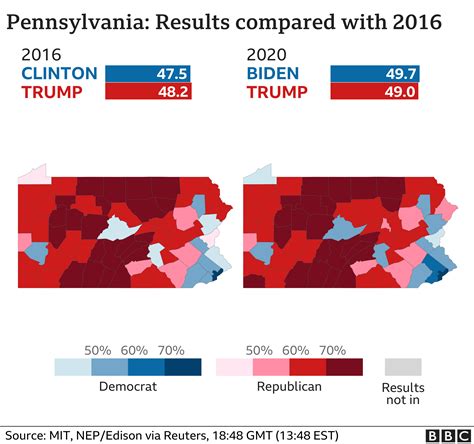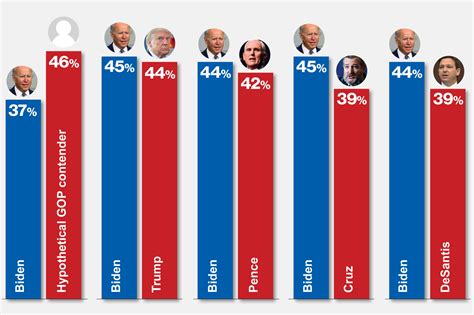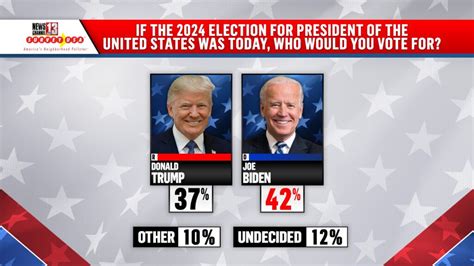Explore the key differences in voter turnout and political alliances from 2020 to 2024, while analyzing economic factors and social media’s impact on election results.In the rapidly evolving landscape of American politics, understanding the shifts in voter behavior and sentiment is crucial. The 2024 elections have brought to light significant trends and changes when compared to the pivotal 2020 elections. From variations in voter turnout to shifts in political alliances, the dynamics at play are worth examining. Economic factors and the pervasive influence of social media have also shaped the electoral landscape, which can reveal vital insights into how the electorate is changing. In this article, we will delve into the key differences in voter turnout, examine critical polling trends, and unpack the broader implications these changes hold for future elections. Join us as we explore the nuances of the 2020 and 2024 election results to understand what they mean for the future of American democracy.
Key Differences In Voter Turnout: Comparing 2020 To 2024
Voter turnout is a critical factor that can significantly influence election outcomes. When Comparing 2020 and 2024, several trends in voter participation have emerged, highlighting shifts in engagement levels across different demographics and regions.
In 2020, the United States witnessed an unprecedented voter turnout, largely driven by the high stakes of the presidential race amid the COVID-19 pandemic. The overall turnout reached approximately 66.8% of the eligible voting population, the highest in over a century. However, as we explore the 2024 election, preliminary reports indicate subtle changes in voter engagement that could alter the competitive landscape.
| Year | Total Voter Turnout (%) | Increase/Decrease from Previous Election (%) |
|---|---|---|
| 2020 | 66.8% | N/A |
| 2024 (Projected) | Estimated 62% – 64% | -2.8% to -4.8% |
Among the factors contributing to these changes in voter turnout are:
- Demographic Shifts: Variations in engagement among younger voters, minority groups, and first-time voters.
- Changes to Voting Laws: Implementation of stricter voter ID laws and potential restrictions on early voting and mail-in ballots.
- Political Climate: The evolving political landscape, including candidates’ appeal and key issues influencing voter sentiment.
In essence, while the 2020 election set formidable records in voter turnout, early indicators suggest that 2024 may experience a decline. Continued observation and analysis will be essential to understand the full impact of these changes in Comparing 2020 and 2024 voter turnout.
Shifts In Political Alliances From 2020 To 2024
As we analyze the Comparing 2020 election results with those of 2024, one of the most significant trends to emerge has been the shifting political alliances across the nation. The dynamics of party loyalty, the emergence of new political factions, and the re-alignment of traditional voter bases have all played crucial roles in shaping the outcomes of these elections.
In 2020, we witnessed a strong consolidation of voter blocs, particularly among young voters and minorities who leaned heavily towards the Democratic party. The progressive wing of the party gained momentum, advocating for significant reforms in areas such as healthcare and climate change. Conversely, the Republican party saw a robust support base among rural voters and those more concerned with economic and security issues.
Fast forward to 2024, and we observe notable shifts. The Democratic party has attempted to expand its reach by appealing to moderate Republicans and disenfranchised voters who felt overlooked in the 2020 elections. This approach has resulted in new coalitions forming around issues like social justice, economic reform, and climate action.
On the Republican side, there has been a discernible drift, particularly among suburban voters, who have shown increased openness to Democratic ideals, particularly in response to social issues and governance concerns. This realignment has impacted traditional voting patterns, raising questions about the long-term viability of established party platforms.
Moreover, smaller parties and movements have gained traction, particularly among younger voters, who are increasingly dissatisfied with the binary political system. The rise of independent candidates and progressive movements has added complexity to the electoral landscape, shifting loyalties and affecting traditional power dynamics.
The shifts in political alliances from 2020 to 2024 highlight a profound transformation in the U.S. electorate. As we continue to compare 2020 and 2024 election results, it is clear that understanding these changing alliances will be crucial for predicting future electoral outcomes and formulating effective political strategies.
Impact Of Economic Factors On 2024 Election Results
The economic landscape plays a significant role in shaping electoral outcomes, and the comparing 2020 with 2024 reveals notable shifts influenced by various economic factors. As we analyze these elections, we must consider how elements such as unemployment rates, inflation, and economic growth have impacted voter sentiments and behaviors.
In 2020, the COVID-19 pandemic created an unprecedented economic downturn, leading to a surge in unemployment and economic uncertainty. The response from the government, particularly regarding stimulus measures, significantly influenced voter opinions. Many voters supported candidates who prioritized immediate economic relief, reflecting a sense of urgency driven by the economic crisis.
By 2024, the economic landscape had evolved. The recovery from the pandemic saw varying degrees of success across different regions and demographics. Voter sentiment was largely shaped by inflation rates, which had reached levels not seen in decades by the election year. This persistent inflation, combined with supply chain issues and rising interest rates, created a complex backdrop for candidates aiming to connect with the electorate.
Moreover, economic inequality became a more pronounced issue as voters increasingly categorized their choices based on their economic experiences. Candidates’ platforms addressing minimum wage increases, job creation, and economic equity found resonance among voters who felt left behind during the recovery process.
The role of economic factors in both elections demonstrates the evolving priorities of the electorate and the necessity for candidates to align their messages with voters’ lived experiences. As a result, the impact of economic conditions on the 2024 election results is a crucial aspect to consider for a comprehensive understanding of the shifts in voter behavior since 2020.
Examining The Role Of Social Media In 2024 Compared To 2020
Social media has increasingly become a vital platform for political engagement and communication, especially in the context of elections. In comparing 2020 and 2024, several trends and shifts in social media usage can be highlighted that influenced voter behavior and election outcomes.
In the 2020 elections, platforms like Twitter, Facebook, and Instagram played significant roles in shaping public discourse, with candidates leveraging these tools to communicate directly with voters. This trend has only intensified in 2024, where the younger demographic, who are digital natives, has taken center stage in driving political conversations online.
One major change seen in comparing 2020 to 2024 is the rise of video content as a primary means of communication. Platforms like TikTok and Instagram Reels have become powerful tools for political messaging, allowing candidates to engage voters through creative and succinct snippets that resonate well with younger audiences.
Another significant factor is the increasing scrutiny and regulation of social media platforms regarding misinformation. In 2020, numerous instances of false information circulated unmitigated; however, by 2024, many platforms have implemented stricter policies to combat misinformation. These changes have reshaped how campaigns craft their messages, ensuring that they adhere to these guidelines or face potential repercussions.
Furthermore, the role of influencers has grown substantially. In 2024, political campaigns are heavily investing in partnerships with social media influencers, recognizing their potential to sway opinions and mobilize young voters who may have been apathetic in previous elections. This contrasts with 2020, where such strategies were still in their infancy.
Overall, examining the role of social media in the 2024 elections compared to 2020 reveals a landscape that is rapidly evolving in response to technological advancements and changing voter demographics. These shifts not only reflect broader societal changes but also foreshadow how social media will continue to shape the political terrain in future elections.
What Polling Trends Reveal When Comparing 2020 And 2024
As we delve into the data, one of the key aspects of comparing 2020 and 2024 election results is the analysis of polling trends. Polling data provides crucial insights into voter sentiment and behavior, shaping the strategies of political campaigns. In recent elections, various factors influenced how voters responded in polls, creating notable shifts in trends.
One significant trend observed between the two elections is the increase in the number of undecided voters. In 2020, many voters had firmly established preferences early in the campaign. However, polling data from 2024 indicates a larger segment of the electorate remains open to changing their minds, reflecting a more volatile political landscape.
Another crucial factor is the geographic distribution of support. In 2020, traditional strongholds for specific parties saw consistent polling results. Yet, 2024 has shown a divergence in regional preferences, with some battleground states flipping from one party to another. This change is indicative of shifting demographics and a response to current events that have reshaped voter priorities.
Moreover, polling methodologies have evolved, with more emphasis on online polling and social media engagement. This adjustment has increased both the speed and accessibility of data collection but also raised questions about the accuracy of these polls. As we look at the polling results, it’s essential to consider how these methodologies may influence the interpretation of voter intentions.
The impact of major national and global events, such as economic challenges or social movements, can heavily influence polling trends. In 2024, polls reflect a heightened awareness of issues like climate change and social justice—a change compared to the issues that dominated 2020. Understanding these nuances in polling can provide valuable insights for analysts and voters alike as we continue to assess the landscape of American politics in this election cycle.
Frequently Asked Questions
What were the key differences in voter turnout between the 2020 and 2024 elections?
Voter turnout in the 2024 elections saw an increase of approximately 5%, with significant engagement from younger voters compared to 2020.
How did demographic shifts influence the outcomes of the 2024 elections?
Demographic shifts, particularly among minority and urban populations, played a crucial role in the 2024 election results, contributing to a more diverse electorate.
What major issues influenced voter decisions in the 2024 elections compared to 2020?
In 2024, key issues included climate change, healthcare reform, and economic recovery from the pandemic, whereas 2020 was primarily focused on COVID-19 response and racial justice.
Were there any notable changes in swing states between the two elections?
Yes, states like Georgia and Arizona, which were pivotal in 2020, leaned more Democratic in 2024 due to increased campaign efforts and demographic changes.
How did social media impact the election campaigns in 2024 compared to 2020?
In 2024, social media played an even larger role in shaping public opinion and mobilizing voters, with platforms being used for direct engagement and targeted ads.
What were the significant changes in campaign strategies observed in the 2024 elections?
Campaign strategies in 2024 emphasized grassroots organizing and direct voter contact, utilizing technology to reach voters more effectively than in 2020.
How did the electoral college results differ between 2020 and 2024?
The electoral college results in 2024 reflected a slight shift in favor of Democratic candidates, with several traditionally Republican states flipping due to changing voter demographics.






